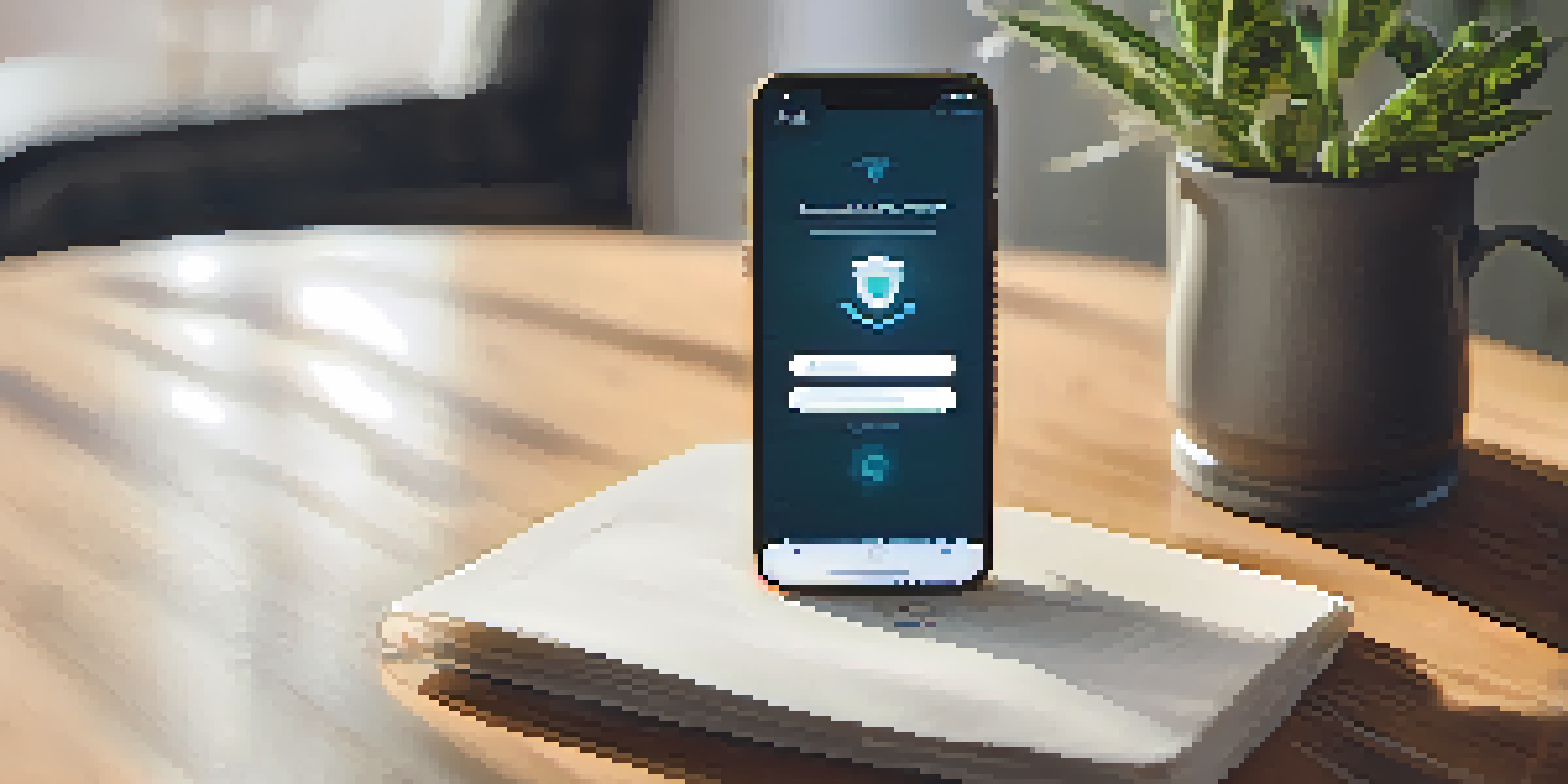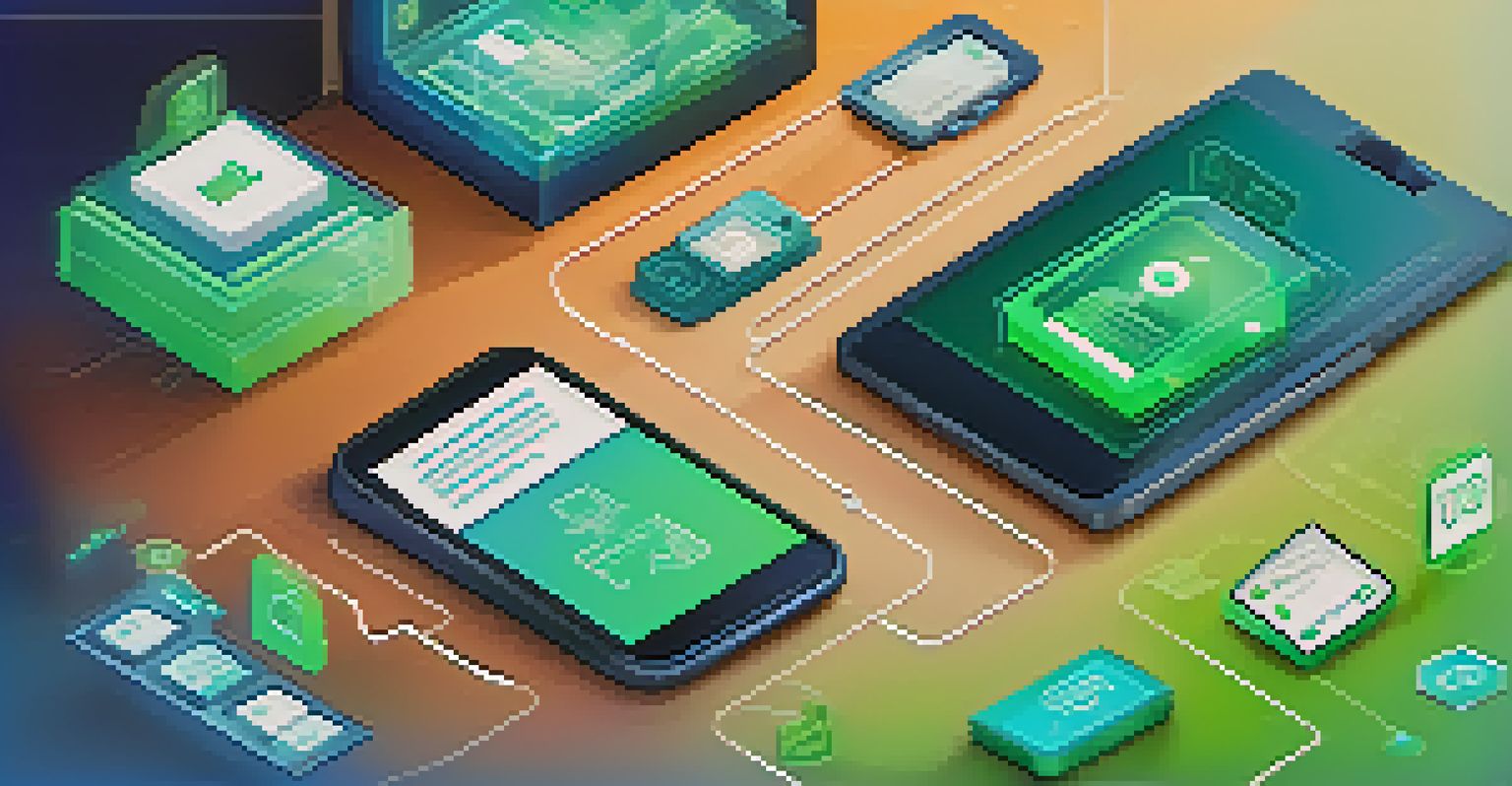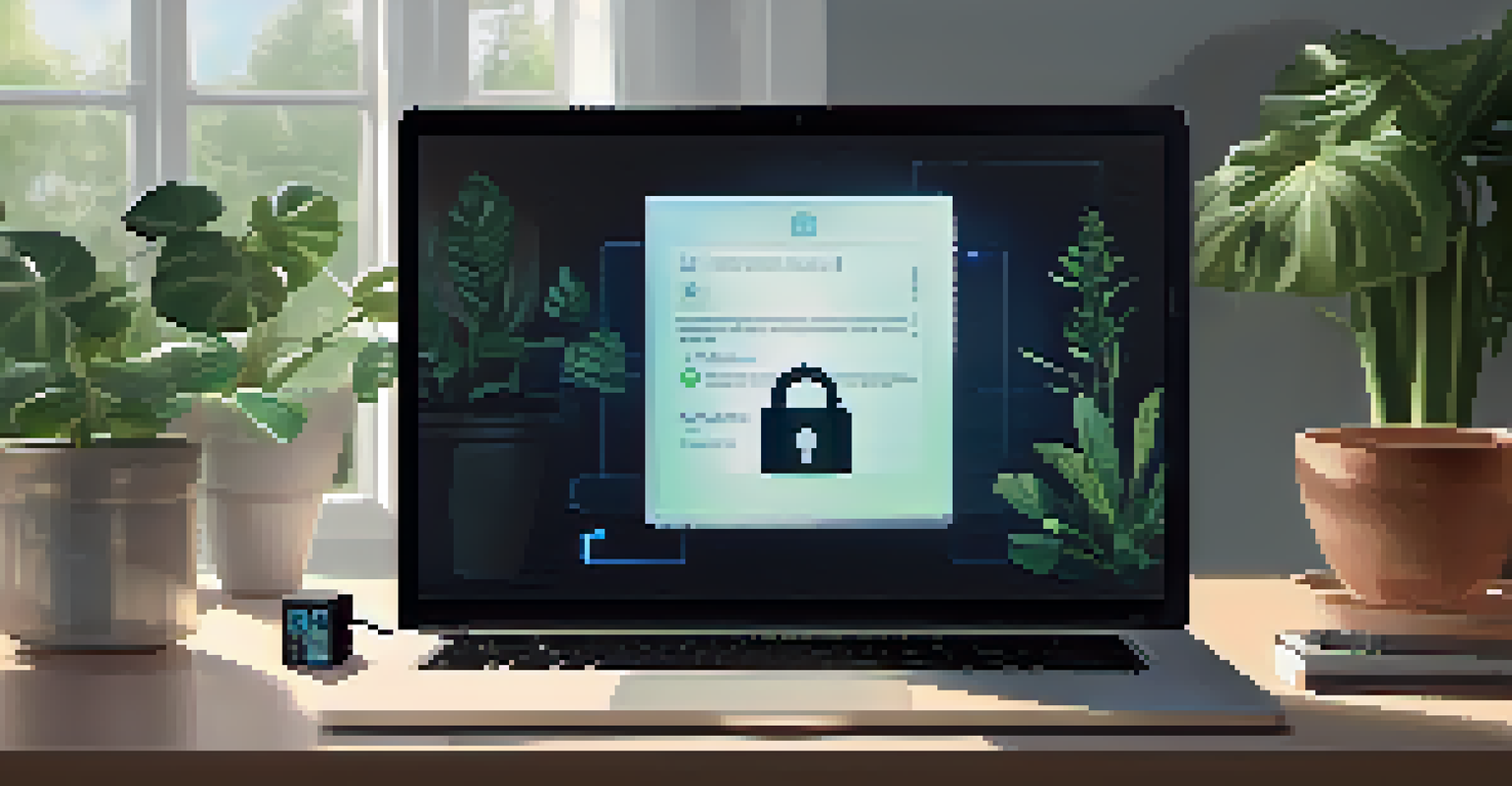The Role of Two-Factor Authentication in Online Safety

What is Two-Factor Authentication and Why Does It Matter?
Two-Factor Authentication (2FA) is a security measure that adds an extra layer of protection when accessing online accounts. Instead of just relying on a password, 2FA requires a second form of verification, such as a text message code or a fingerprint scan. This is crucial in today's digital age, where cyber threats are rampant and passwords alone often aren't enough to keep our information safe.
The biggest risk is not taking any risk. In a world that's changing really quickly, the only strategy that is guaranteed to fail is not taking risks.
Imagine you're locking your front door but also installing a deadbolt. That extra lock makes it harder for someone to break in, just like 2FA makes it tougher for hackers to access your accounts. By requiring something you have (like your phone) in addition to something you know (your password), you significantly bolster your defenses against unauthorized access.
With the rise in data breaches and identity theft, incorporating 2FA into your online routines is not just smart—it's essential for safeguarding personal information. As we continue to live more of our lives online, understanding and implementing 2FA can make a tangible difference in our overall security.
The Types of Two-Factor Authentication Available
There are several methods of 2FA that you can choose from, each with its own strengths and weaknesses. The most common form is SMS-based 2FA, which sends a code to your phone via text message. While convenient, this method can be vulnerable to SIM-swapping attacks, where hackers take control of your phone number to intercept codes.

Another popular option is using authentication apps like Google Authenticator or Authy. These apps generate time-sensitive codes that are more secure than SMS, as they don’t rely on your phone number. This method is akin to having a physical key that only you can access, making it a safer choice for protecting sensitive accounts.
Enhance Security with 2FA
Two-Factor Authentication adds an essential extra layer of security to protect your online accounts from unauthorized access.
Biometric authentication, such as fingerprint scans or facial recognition, is another form of 2FA gaining traction. While it offers a seamless user experience, the security of this method can vary based on the technology used. Ultimately, the best type of 2FA for you will depend on your personal preferences and the level of security you seek.
How Two-Factor Authentication Protects Your Accounts
2FA acts as a barrier against unauthorized access by requiring both your password and a second verification method. Even if a hacker manages to obtain your password through phishing or data breaches, they still won't be able to log in without that second factor. This dual-layer approach dramatically reduces the risk of account compromise.
Security is not a product, but a process.
Think of it like needing both a key and a code to enter a secure facility. Just having either one isn't enough; you need both to gain access. By making it more complicated for cybercriminals to infiltrate your accounts, you're effectively deterring them from attempting to do so in the first place.
Moreover, many online services now alert you if someone tries to access your account from an unfamiliar device or location when 2FA is enabled. This added layer of monitoring helps you stay informed about potential threats, allowing you to take action before any damage is done.
The Importance of Choosing Strong Passwords
While 2FA significantly enhances your security, it’s essential to remember that it works best in conjunction with strong, unique passwords. Using a simple or commonly used password can still leave you vulnerable, even with 2FA in place. It’s like having a deadbolt but leaving your window unlocked; a determined intruder can still find a way in.
To create a strong password, consider using a mix of upper and lower case letters, numbers, and special characters. A good rule of thumb is to aim for at least 12 characters and avoid dictionary words or easily guessed information like birthdays. Password managers can help in generating and storing complex passwords, making this process easier.
Choose the Right 2FA Method
Different 2FA methods, such as SMS codes, authentication apps, and biometrics, offer varying levels of security, so pick the one that suits your needs best.
Ultimately, the combination of a strong password and 2FA gives you the best defense against unauthorized access. Just as you wouldn't rely on a single lock for your home, don’t depend on just one form of security for your online accounts.
Common Misconceptions About Two-Factor Authentication
Many people wrongly assume that 2FA is too complicated to set up or use. In reality, most platforms offer user-friendly options that guide you through the setup process step by step. Once established, using 2FA can become a seamless part of your login routine, often requiring just a few extra seconds.
Another misconception is that 2FA is only necessary for high-risk accounts, like online banking. However, with the increasing number of data breaches across all types of services, every account—be it social media or email—can benefit from the extra security that 2FA provides. Think of it as locking the door to every room in your house, not just the valuables.
Lastly, some users believe that 2FA is foolproof, but that’s not entirely true. While it significantly reduces the risk of unauthorized access, no system is entirely secure. Staying informed about potential threats and continuously updating your security practices is crucial in maintaining your online safety.
The Future of Two-Factor Authentication
As technology evolves, so too does the landscape of online security. Two-Factor Authentication is becoming more sophisticated, with advancements like hardware tokens and biometric verification gaining traction. These innovations aim to make 2FA not only safer but also more user-friendly, helping to encourage broader adoption.
We may soon see a shift toward passwordless authentication methods, where 2FA is the primary means of access. Imagine logging into your accounts using only your fingerprint or a secure facial scan, eliminating passwords altogether. This would streamline the login process while maintaining high security standards.
Strong Passwords Matter
Using strong, unique passwords alongside 2FA is crucial for maximizing your protection against cyber threats.
However, as we move forward, it's essential to stay vigilant. Cyber threats will continue to evolve, and so must our security measures. Adopting new technologies and practices, including 2FA, will be crucial in keeping our online identities secure in the future.
Getting Started with Two-Factor Authentication
If you're ready to enhance your online security with 2FA, the first step is to check if your online accounts offer this feature. Most major platforms, including Google, Facebook, and banking sites, provide easy options for enabling 2FA in your account settings. It only takes a few minutes to set up and can make a world of difference.
Once you've enabled 2FA, choose the method that works best for you—whether it's SMS codes, an authentication app, or biometric options. Take some time to familiarize yourself with how it works, so you feel comfortable when logging in. This small investment of time can offer significant peace of mind.

Finally, don't forget to educate friends and family about the importance of 2FA. Sharing your knowledge can help create a safer online environment for everyone. Together, we can foster better security practices and reduce the risks associated with digital interactions.